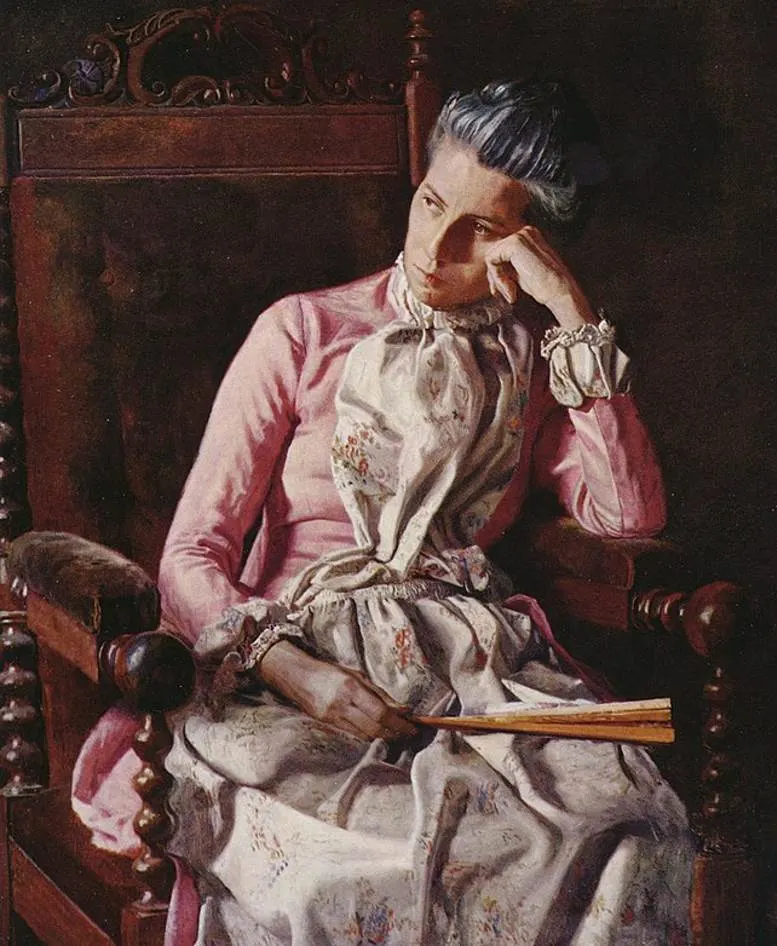Just northwest of downtown Washington D.C., in the Dupont Circle neighborhood of the city, you can find a museum that houses an amazing collection of paintings.
The Phillips Collection was established by art collector and art critic Duncan Phillips (1886-1966), along with his wife Marjorie Acker Phillips (1894-1985).
Duncan was an important patron of the arts and introduced modern art to the United States in the early 20th century.
He had quite some wealth at his disposal as the grandson of a banker and owner of a steel company named James Laughlin. Marjorie was an artist herself and an avid art collector as well.
The museum opened its doors in 1921 with a collection of over 600 paintings. Today, the number of artworks at the Phillips Collection almost reaches 6,000 works, including some of the greatest Post-Impressionist masterpieces.
In this article, you’ll discover some of the most famous paintings at the Phillips collection.
1. Luncheon of the Boating Party – Pierre-Auguste Renoir
- Date created: 1880-1881
- Dimensions: 129.9 × 172.7 centimeters (51 × 68 inches)
Luncheon of the Boating Party is one of the greatest masterpieces by Pierre-Auguste Renoir (1841-1919), an Impressionist artist who greatly influenced the movement in the late 19th century. The painting was displayed at the 7th edition of the Impressionist Exhibition in 1882 and was regarded as the best painting of the event.
The painting depicts various people who are having lunch on the balcony of the Maison Fournaise restaurant. This restaurant is situated in Chatou in the western suburbs of Paris. Fellow artist Gustave Caillebotte (1848-1894) can be seen sitting n the bottom right corner, as well as many other associates of Renoir.
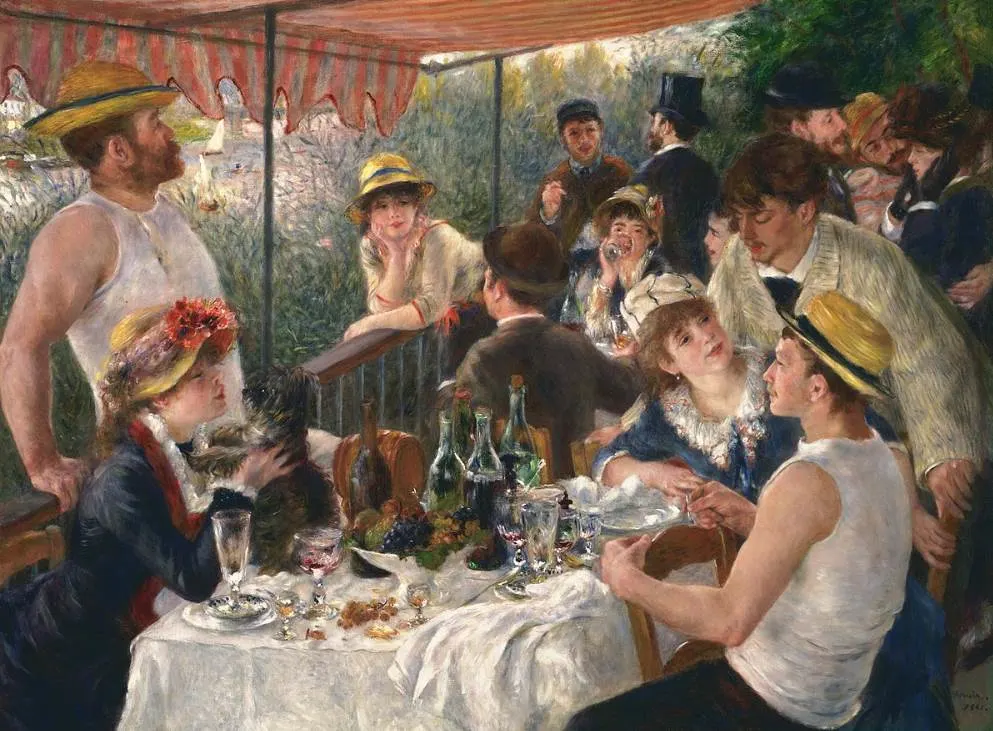
2. The Blue Room – Pablo Picasso
- Date created: 1901
- Dimensions: 50.48 × 61.59 centimeters (20 × 24 inches)
The Blue Room is one of the many dark and gloomy paintings by Pablo Picasso of the early 20th century. This period in the artist’s career is referred to as his “Blue Period,” and this work perfectly describes it. It was a time when the Spanish artist was still struggling to find his artistic breakthrough.

The work depicts a naked woman who is being over in a bathtub in a room that is dominated by a gloomy blue hue. It’s a fascinating painting in the oeuvre of Pablo Picasso (1881-1973) because it’s one of the first works of his Blue Period, completed in 1901 when he was traveling between Paris and Spain.

3. The Repentant Saint Peter – El Greco
- Date created: 1590-1595
- Dimensions: 125.1 x 107.6 centimeters (49.2 x 42.3 inches)
The Repentant Saint Peter is a painting by El Greco, the Greek-born artist who spent the final decades of his life living and working in Toledo, Spain. Here he combined the early Byzantine influences from his native Crete and the Italian influences during his extended stay in the country.
This in combination with El Greco’s unique twist resulted in some of the most fascinating Mannerist paintings of the 16th and early 17th centuries. These were quite a few centuries ahead of their time. This painting of a Penitent Saint Peter is full of emotion that resembles the works of Expressionist artists of the early 20th century.

4. The Road Menders – Vincent van Gogh
- Date created: 1889
- Dimensions: 73.66 x 92.71 centimeters (29 x 36.5 inches)
The Road Menders is a painting by Vincent van Gogh (1853-1890) which he produced while he was staying at the Asylum of Saint-Paul-de-Mausole in Saint-Rémy-de-Provence. He lived here for a year between May 1889 and May 1890 and sometimes visited places in the area to get inspiration for new paintings.
The painting depicts road workers in a street of Saint-Rémy which was called the Cours de l’Est at the time. Laborers had always been a popular subject for Vincent van Gogh. He created an initial painting en plein air on the spot and completed this painting at the Phillips Collection later in his studio at the asylum.
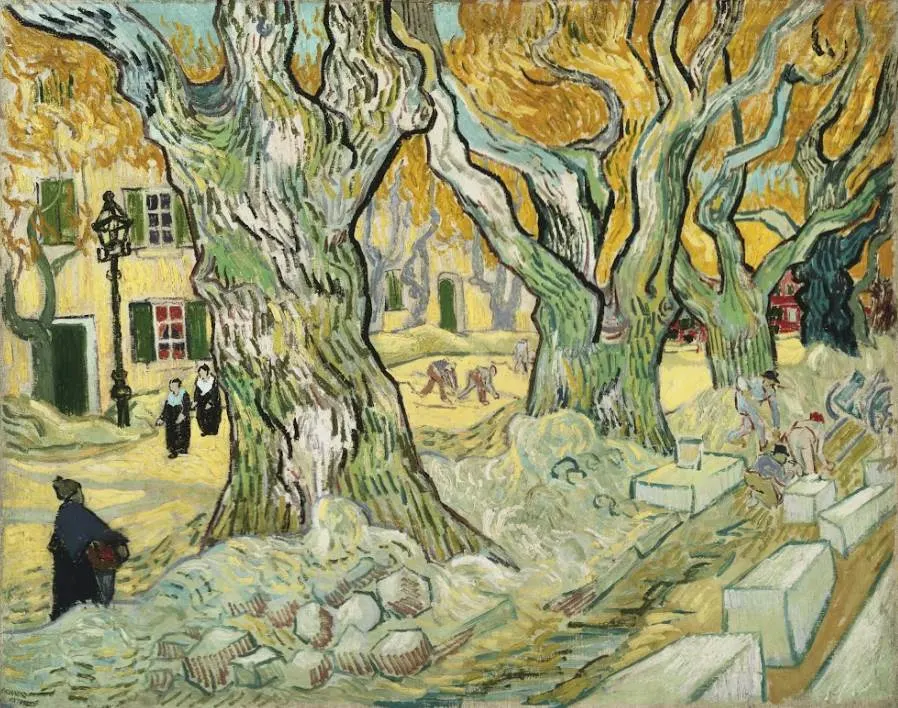
5. The Road to Vétheuil – Claude Monet
- Date created: 1879
- Dimensions: 59.4 x 72.7 centimeters (23 x 28 inches)
The Road to Vétheuil is a relatively small painting by Claude Monet (1840-1926), one of the leading figures of the Impressionist art movement. Claude Monet and his family were briefly exiled to London during troubling times in France in the early 1870s and returned to France to settle in Argenteuil.
In 1878, the French artist moved further west to a town called Vétheuil and this painting is one of several versions that depicts the road to this small town in northern France. The painting depicts the road from the direction of La Roche Guyon and the painting at the Phillips Collection was the final of the five paintings of this subject matter.

6. Spanish Ballet – Édouard Manet
- Date created: 1862
- Dimensions: 60.9 x 90.5 centimeters (24 x 35 inches)
The Spanish Ballet is a painting by Realism artist Édouard Manet (1832-1883), an artist who played a major role in the development of Realism into Impressionism. This work commemorates one of his great interests which was Spanish ballet performances.
Although he already developed an interest in Spanish Ballet performances in the late 1850s, it wasn’t until 1862 that he managed to arrange several dancers from the Royal Theater of Madrid to pose for one of his paintings. He painted the dancers as if they were in the middle of a performance on stage.

7. Mont Sainte-Victoire – Paul Cézanne
- Date created: 1886-1887
- Dimensions: 59.69 x 72.39 centimeters (23.5 x 28.5 inches)
Mont Sainte-Victoire is one of several paintings by Paul Cézanne that depict this limestone mountain in southern France. The main reason why he painted this particular mountain so many times is that he could actually see it from his house in Aix-en-Provence where he lived during the final years of his life.
Paul Cézanne (1836-1906) was another pivotal figure in the world of art because he laid the foundation for modern artists of the early 20th century. He reshaped the ideals of Post-Impressionist artists with distinctive brushstrokes that inspired Cubist artists who came after him.
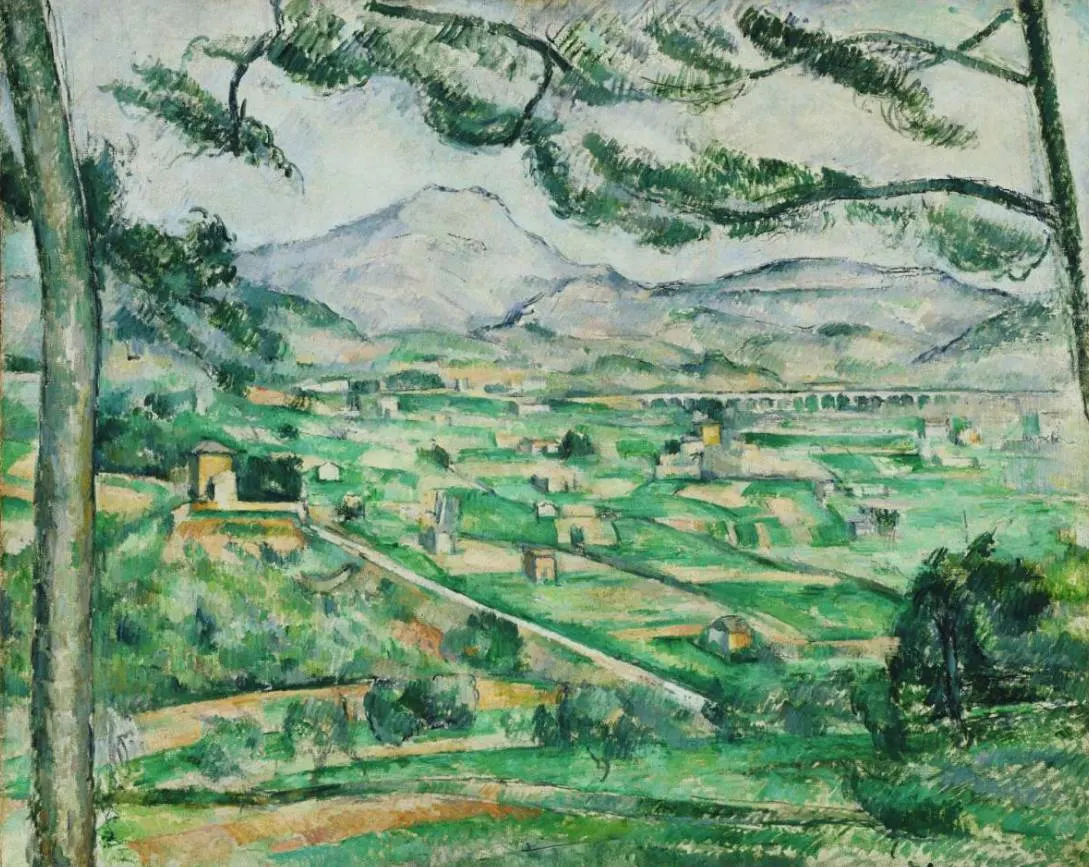
8. The Round Table – Georges Braque
- Date created: 1929
- Dimensions: 45.73 x 113.66 centimeters (57.37 x 44.75 inches)
The Round Table is a still-life painting by Georges Braque (1882-1963) in the typical Cubist style that defines the French artist’s oeuvre. He already produced many similar paintings shortly after the conclusion of World War I, but he expanded his range with this work.
The influence of Paul Cézanne is clear in the paintings of Braque, especially when it comes to his use of irrational angles to create multiple viewing angles. Duncan Phillips himself called it one of Braque’s best and most exciting works and, therefore, a culmination of the Cubist art movement.

9. Horses Leaving the Sea – Eugène Delacroix
- Date created: 1860
- Dimensions: 51.4 x 61.5 centimeters (20.2 x 24.2 inches)
Horses Leaving the Sea is a painting by Eugène Delacroix (1798-1863), the leading artist of the Romantic era in France in the 19th century. We can see two horses emerging from the sea while a Morrocan rider tries to control the wild animals.
The painting was completed in the final years of the life of Eugène Delacroix. It’s one of the many paintings in his oeuvre that depict horses as he was a fan of seeing these majestic animals moving around. The city of Tangiers can be seen in the background and it’s fair to conclude that he was nostalgic about his experiences during his visit to North Africa nearly 3 decades earlier.
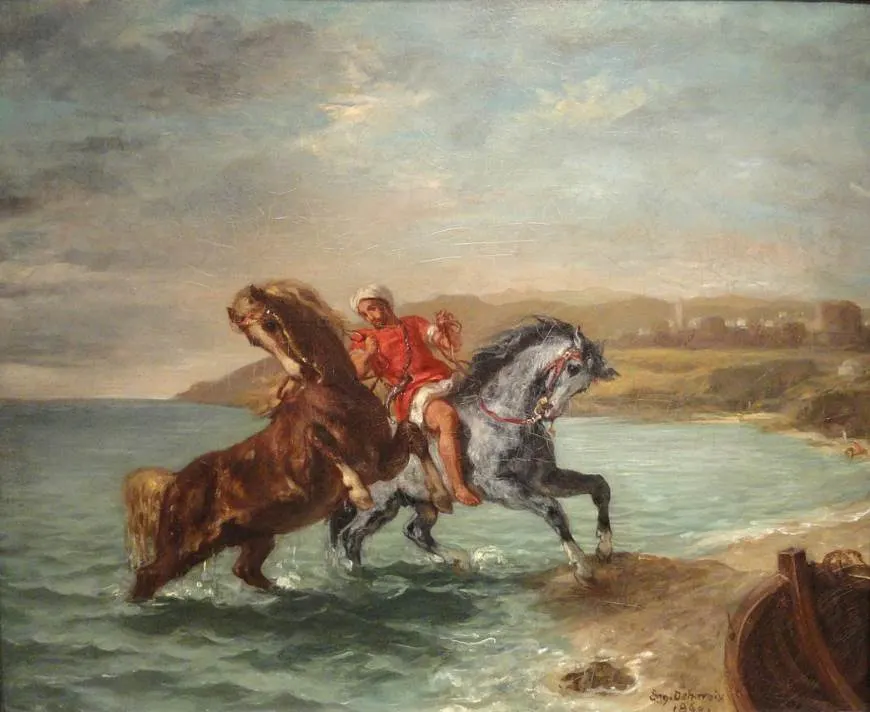
10. Miss Amelia Van Buren – Thomas Eakins
- Date created: 1891
- Dimensions: 110 × 81 centimeters (45 × 32 inches)
Miss Amelia Van Buren is a painting by Thomas Eakins (1844–1916), one of the most famous American artists in history. It depicts Amelia Van Buren (1856 – 1942), one of the artist’s pupils whom he considered to be the most talented of all.
She studied with Eakins at the Pennsylvania Academy of the Fine Arts between 1884 and 1885. Despite her clear talent for painting, she decided to pursue a career in photography. Despite this notion, little is known about her later life, and engaged in a “Boston Marriage” (two wealthy women living together without the help of a man) with another student of Eakins called Eva Watson.
